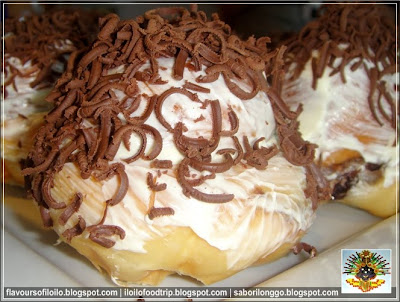Chocolate has never been renowned as much as it is today. With its immense popularity, chocolate is the always the sweet talk of the town. Bring new wave to your taste buds as you satisfy your sinful cravings with the delightful array of chocolate concoctions. Enjoy this 5-week showcase of chocolate creation as Tinapayan brings you your “Sinful Desires”.
 For the first time, Tinapayan will hold its first “Cake Decorating Contest” on Oct. 1, 2010 at The Atrium lobby, as different schools compete and unleash their creative skills and design. Witness and be amazed with their intricately designed creations. Be part of this celebration and also have the chance to voice out you favorite cake design and support your respective schools by voting.
For the first time, Tinapayan will hold its first “Cake Decorating Contest” on Oct. 1, 2010 at The Atrium lobby, as different schools compete and unleash their creative skills and design. Witness and be amazed with their intricately designed creations. Be part of this celebration and also have the chance to voice out you favorite cake design and support your respective schools by voting.For the first week (Sept. 27 - Oct. 3, 2010) of the Chocolate Festival enjoy the following creations by Tinapayan Bakeshop
 Choco Hazelnut Mousse Cake A sweet fusion of hazelnuts and cream - chocolate cake blended with creamy chocolate hazelnut mousse and magically sprinkled with chopped hazelnuts.
Choco Hazelnut Mousse Cake A sweet fusion of hazelnuts and cream - chocolate cake blended with creamy chocolate hazelnut mousse and magically sprinkled with chopped hazelnuts. Coco Fantasy Bar Rumble your tongue with the twist of coco and choco creation is a fudgy bar. The oh-so-yummy taste of this concoction will truly be your fantasy!
Coco Fantasy Bar Rumble your tongue with the twist of coco and choco creation is a fudgy bar. The oh-so-yummy taste of this concoction will truly be your fantasy! Choco Orange Bar Oh-some bars! Moist chocolate cake bars merged in a fruit mandarin orange mousse. So refreshing!
Choco Orange Bar Oh-some bars! Moist chocolate cake bars merged in a fruit mandarin orange mousse. So refreshing! Choco Ensaimada A new wave of ensaimada will truly entice our appetite as it comes with a great blend of chocolate flavour!
Choco Ensaimada A new wave of ensaimada will truly entice our appetite as it comes with a great blend of chocolate flavour!Wow! Dream no more! All these great flavours can be tasted! Visit Tinapayan Bakeshop at The Atrium, Delgado, Jaro, Mandurriao and soon in Arevalo. So what are you waiting for? Grab your sweetest temptations and indulge yourselves into the real chocolate madness – sinfully delicious!
